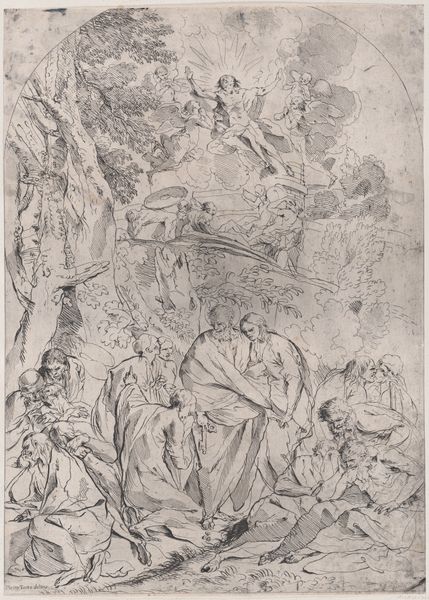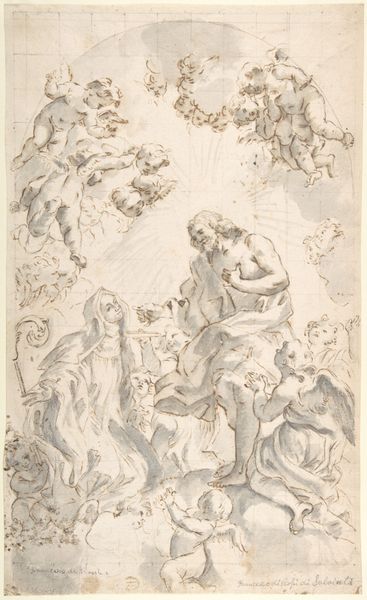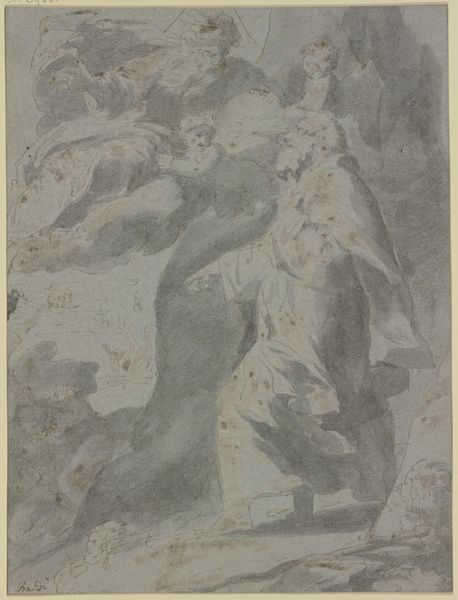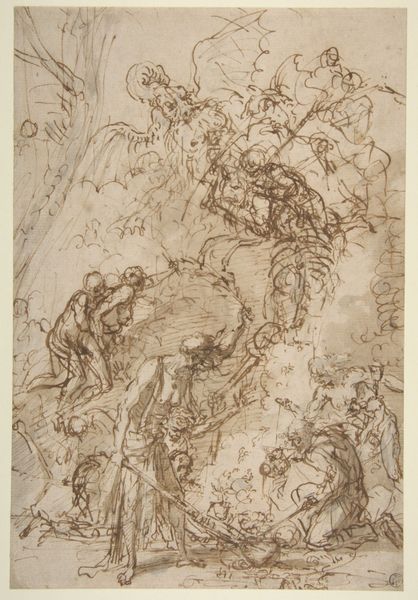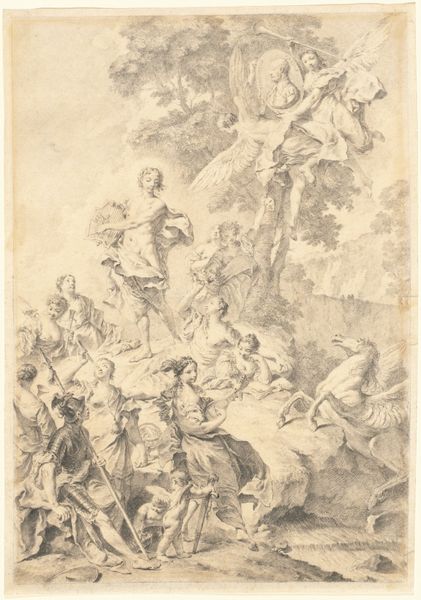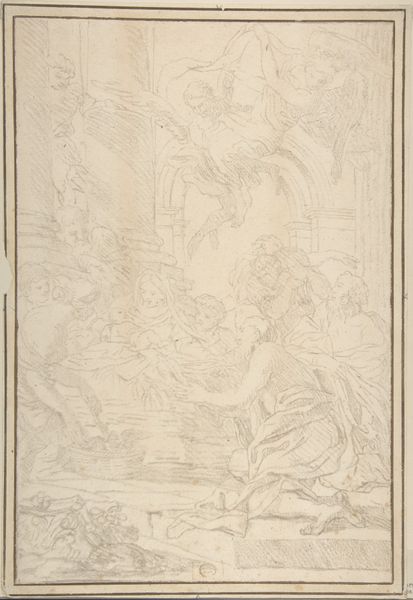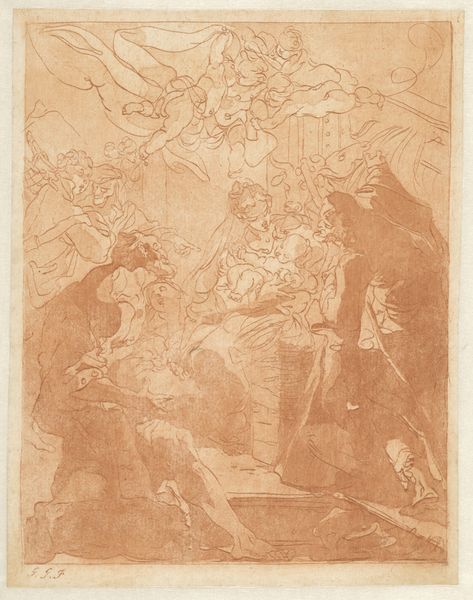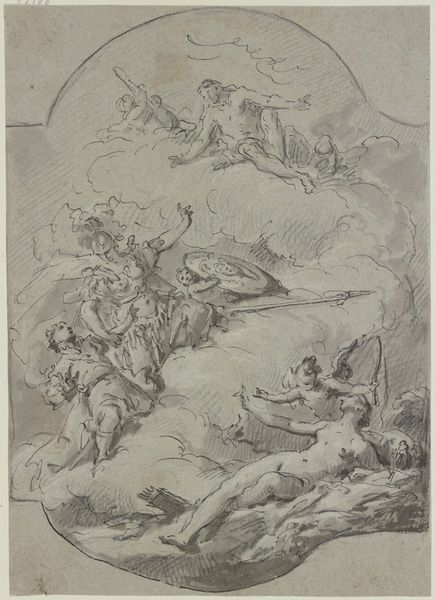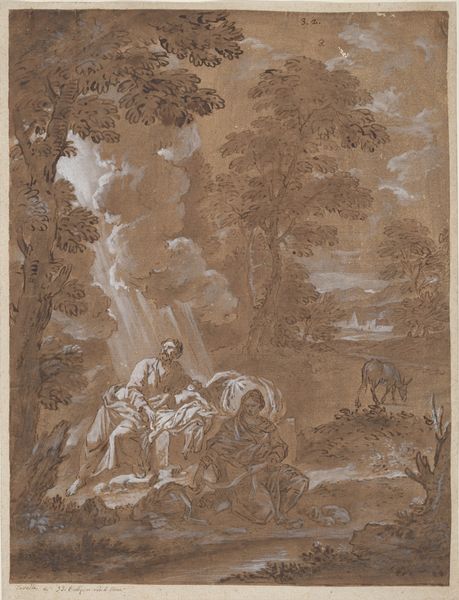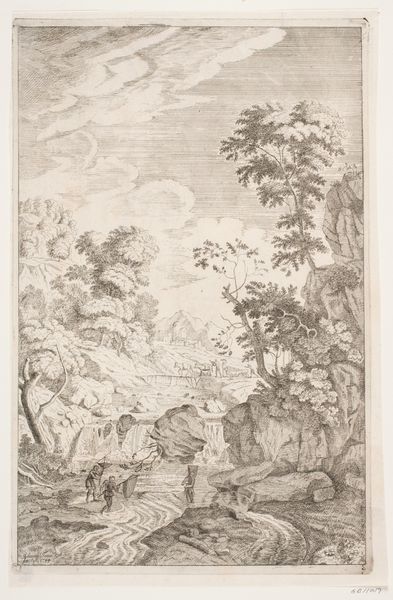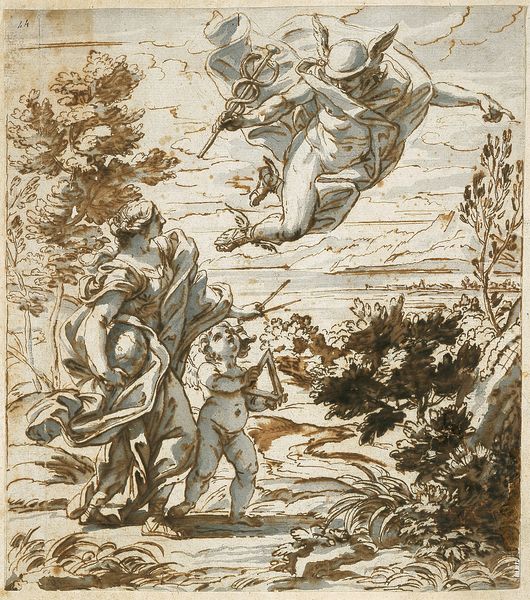
drawing, print, etching, ink, engraving
#
portrait
#
drawing
#
ink drawing
#
baroque
#
ink painting
# print
#
pen sketch
#
etching
#
human-figures
#
figuration
#
ink
#
history-painting
#
engraving
#
christ
Dimensions: image: 7 5/8 x 4 3/4 in. (19.4 x 12 cm), trimmed to image
Copyright: Public Domain
Curator: Well, the first thing that hits me is this feeling of ecstatic chaos. Like a whirlwind caught on paper. Editor: Indeed. What we're looking at is "Ascension," an etching and engraving by Claude Gillot, dating sometime between 1685 and 1722. You can currently find it hanging in the Metropolitan Museum of Art. Gillot was a fascinating figure in the French Baroque, often dealing with theatrical and fantastical subjects. Curator: Ah, theatrical is right! All those figures, reaching, pointing. There’s something about the scratching lines, the ink, that makes it feel so raw, immediate. Like he was possessed while drawing. Editor: It certainly captures a sense of drama, but within a very particular visual language. Consider how religious imagery was being consumed and interpreted in the public sphere at the time. Prints like these played a huge role in disseminating religious narratives and influencing popular piety. The Church wanted a strong and consistent messaging. Curator: But there’s a personal element, too, right? Like Gillot is grappling with something beyond doctrine? I get a sense of genuine wonder. Look at the swirling cloud taking Christ up— it feels alive. Editor: Precisely. It’s about how he interprets a prescribed narrative within the framework of Baroque aesthetics and the socio-political context. Those dramatic gestures aren't just artistic flair; they're signifiers deeply embedded in the culture. He isn't creating in a vacuum. Curator: Still, looking at this, I feel…uplifted. Like maybe, just maybe, there’s something beyond the everyday humdrum. The rawness almost lends credibility to that hope. Editor: I would argue that these affordable engravings allowed individuals access to these previously rarified art images and the associated social status, thus inspiring their beliefs as consumers and potential members of a new and "better" social class. Curator: I guess we’re both finding ascension here, just different kinds. Editor: Absolutely. Art reflects and shapes its world.
Comments
No comments
Be the first to comment and join the conversation on the ultimate creative platform.

